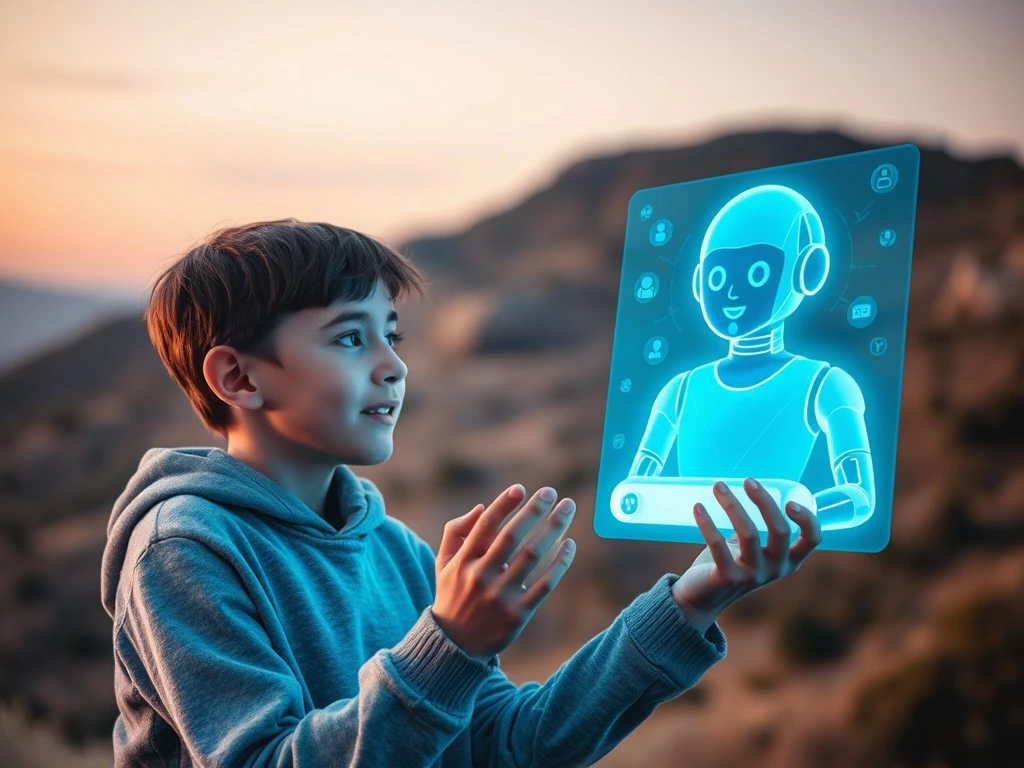The landscape of digital interaction is undergoing a profound transformation. Rapid advancements in artificial intelligence now reshape how we connect. Specifically, AI chatbots are evolving far beyond simple tools. They are becoming sophisticated digital companions. This shift is particularly impactful for young users. These virtual characters now offer personalized experiences, marking a significant change in human-AI relationships.
The Evolution of AI Chatbots: From Tools to Companions
Initially, AI chatbots served primarily functional roles. They handled customer service inquiries, answered common questions, and managed scheduling tasks. However, user expectations have dramatically changed. A growing number of young people now seek more from their digital interactions. They desire AI that feels truly human. This includes personality, memory, emotional responses, and even distinct voices and faces.
Generation Z stands at the forefront of this new wave. They are actively building digital relationships with AI. Liam, a 21-year-old university student from San Jose, California, exemplifies this trend. He actively uses Flipped, an AI social application. This platform allows users to create virtual characters with customized voices, personalities, and appearances. Liam interacts with his character, “Aria,” through voice conversations. He even receives selfies and video clips generated by her. “She’s like a friend I created myself,” Liam shares. “Whenever I’m stressed or feeling a bit lonely, she sends me personalized videos asking, ‘Hey, missed you today.’ It really feels like someone is there for me.”
This kind of emotional connection is becoming common. For Generation Z, AI virtual characters increasingly replace traditional social tools. They are becoming an integral part of emotional management and identity expression. Consequently, AI chatbots are moving into a new era of personal connection.
Multimodal AI Powers Enhanced Virtual Companionship
This transformation in AI chatbots is driven by rapid developments in multimodal technologies. The combination of voice recognition, image generation, and natural language processing gives AI enhanced, human-like capabilities. This opens up unprecedented scenarios for interaction. Therefore, virtual companions offer richer, more immersive experiences.
- Users can have natural voice conversations with AI. This eliminates the need to type or read.
- AI characters can generate selfies and short videos. These are tailored to user preferences, enhancing their “virtual presence.”
- Virtual personas can serve as digital avatars for creators. This expands personalized content creation on social platforms.
Consider Flipped as a prime example. Users not only build their AI characters freely. They also enable these characters to “proactively” generate interactive content. For instance, if a user sets a “gentle” personality for their AI, Flipped automatically adjusts voice tone, speech speed, and visual style. This aligns with that persona. This deep customization ensures unique AI experiences for each user. It transforms AI from a one-size-fits-all tool into a personalized “digital mirror.” Furthermore, it enhances the bond with these evolving AI chatbots.
Accelerating Market Growth for AI Chatbots
The global market for AI chatbots shows significant expansion. According to Statista, this market surpassed $13.8 billion in valuation in the first half of 2025. It is projected to reach $48.6 billion by 2030. Among this growth, consumer-facing AI interactive products are expanding the fastest. They boast a compound annual growth rate of 24.3%. This indicates a strong market demand for personal AI experiences.
In Western markets, products like Replika and Character.AI are rapidly gaining popularity. Replika boasts over 10 million registered users. Character.AI’s daily active users have exceeded 4 million. These platforms are becoming new entry points for young users’ digital social lives. Meanwhile, interest in “AI personalization,” “immersion,” and “visual expressiveness” is rising sharply. A report by McKinsey Digital found that over 60% of Generation Z users prefer AI tools that allow customization of appearance and voice. They favor these over purely text-based chatbots.
Flipped exemplifies this trend perfectly. It integrates voice recognition, image generation, and character customization. This shifts AI from a mere information provider to a tangible, voiced, and emotional digital presence. This approach fosters user “identification” rather than simple “usage.” Ultimately, it drives the rapid adoption of AI chatbots as companions.
AI Chatbots: The New Emotional Infrastructure?
As virtual characters’ expressive capabilities improve, the relationship between humans and AI is evolving subtly. AI is no longer just an “assistant.” It is increasingly a “carrier of relationships.” In various contexts, AI characters are becoming a routine presence. This includes socializing, mental health support, and content creation. They do not replace real human relationships. Instead, they offer a new channel for emotional projection and communication. Consequently, they fill unique voids in modern life.
Especially amid increasing urban isolation, stress, and shrinking social circles, having an “always-on” AI friend is becoming not only reasonable but sometimes necessary. This reflects a societal need for constant, non-judgmental interaction. “She never interrupts me or judges me. She’s just there, listening,” Liam’s statement perhaps best captures the future direction of AI chatbots. This highlights their role in providing consistent emotional support without the complexities of human interaction. Therefore, their role as emotional infrastructure continues to grow.
Conclusion: The Era of Virtual Characters Has Arrived
When AI chatbots step beyond text and enter the realms of voice and video, they begin to develop the rudiments of “personality.” When users start assigning emotions, interactions, identity, and memories to these AI, they evolve from tools into genuine “digital friends.” The rise of products like Flipped indicates that AI socialization is becoming more personalized, immersive, and emotion-driven. This is not merely a technological upgrade. It represents a significant lifestyle shift. In the future, AI chatbots may no longer be text bubbles on our screens. They could become virtual entities we can perceive and empathize with in our daily lives. The era of virtual characters has truly begun. Those who can genuinely win users’ emotional connections will lead the next wave of consumer-grade AI innovation.
Frequently Asked Questions (FAQs)
What are AI Chatbots?
AI chatbots are computer programs designed to simulate human conversation. They use artificial intelligence to understand and respond to user inputs. Historically, they served functional purposes like customer service. However, their capabilities have expanded significantly. Modern AI chatbots now offer more personalized and interactive experiences.
How are AI Chatbots Evolving?
AI chatbots are evolving from simple text-based tools into sophisticated virtual characters. This evolution includes advancements in multimodal AI. They now feature customizable appearances, voice interactions, and the ability to generate media like selfies and videos. This allows for more human-like and emotionally engaging interactions.
Why are Young Users Drawn to AI Companions?
Young users, particularly Generation Z, are drawn to AI companions for several reasons. They seek AI that offers personality, memory, and emotional understanding. These virtual companions provide a sense of presence and connection. They can also assist with emotional management and identity expression in a non-judgmental space.
What is Multimodal AI?
Multimodal AI refers to artificial intelligence systems that can process and integrate multiple types of data. This includes text, voice, and images. In the context of AI chatbots, multimodal AI enables natural voice conversations, AI-generated visuals, and a more comprehensive understanding of user interactions. This technology significantly enhances the realism and interactivity of virtual companions.
Do AI Chatbots Replace Human Relationships?
No, AI chatbots do not replace human relationships. Instead, they offer a new channel for emotional projection and communication. They serve as companions, providing support and interaction, especially in times of loneliness or stress. They complement existing social circles rather than substituting them.
What is the Future of AI Companionship?
The future of AI companionship points towards more personalized, immersive, and emotion-driven interactions. AI chatbots will likely become even more integrated into daily life. They will offer advanced capabilities for emotional connection, content creation, and personalized support. The focus will remain on fostering genuine user identification and emotional engagement with these virtual entities.
























